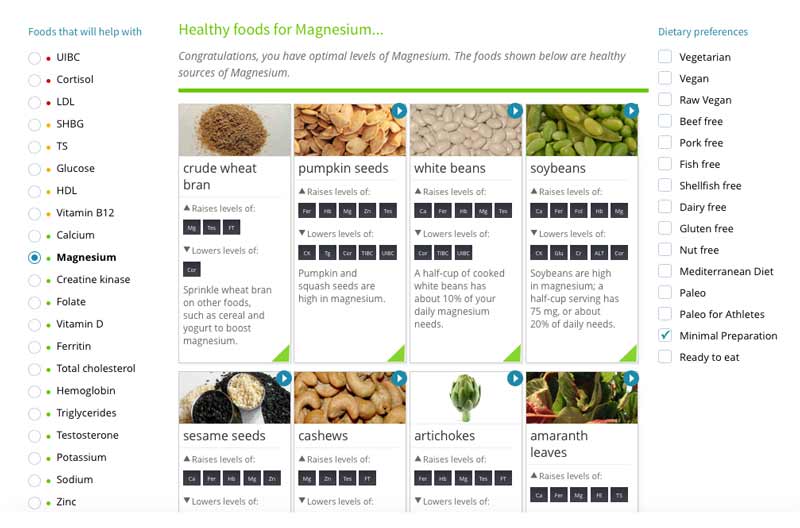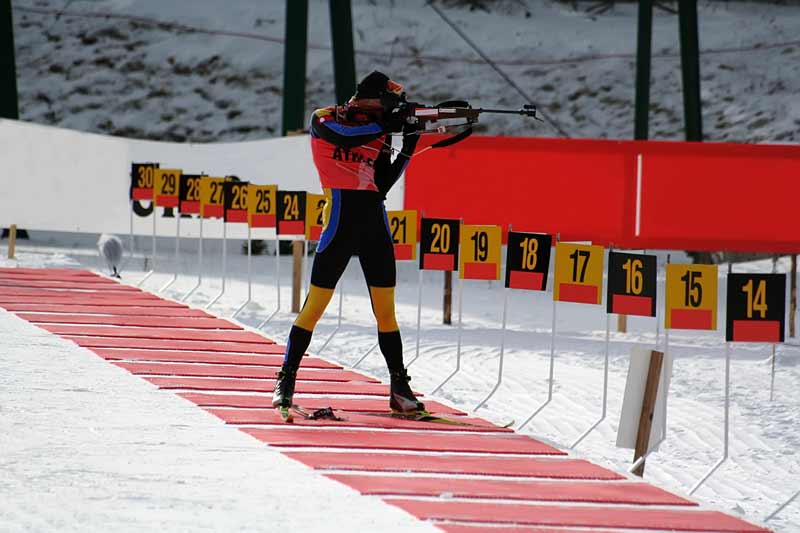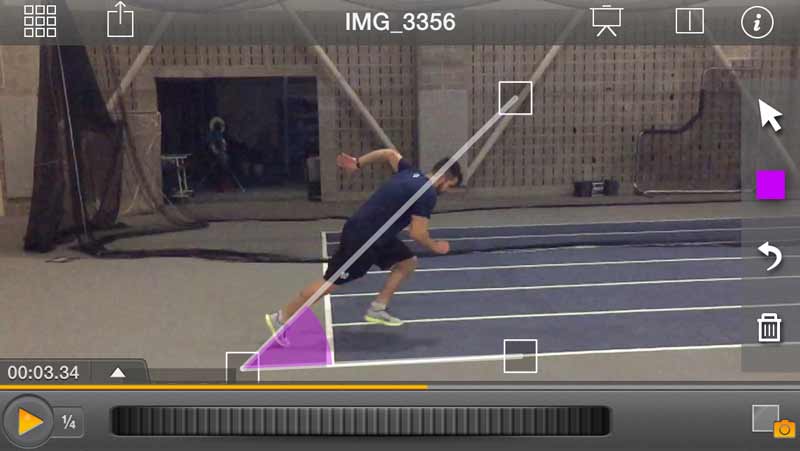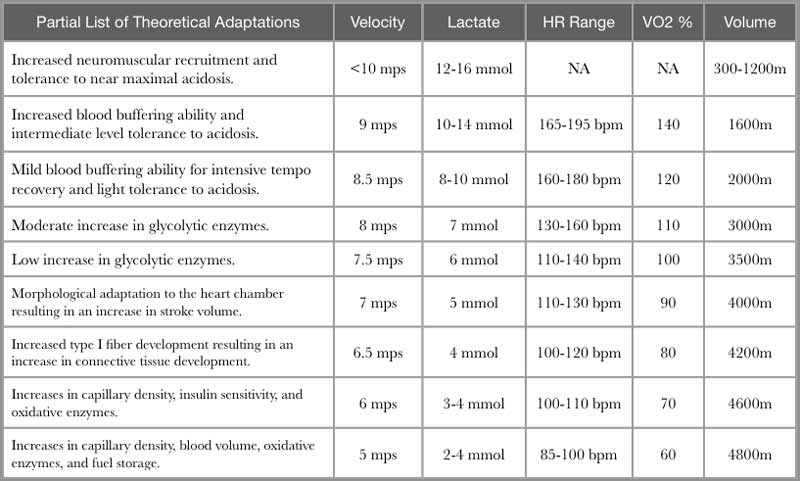
By Carl Valle
I have learned a lot from sport scientists while traveling internationally, but the best secrets come from the applied professionals and coaches who review information from research and create training programs from the studies. Two years ago Hakan Andersson sent me a research study on a Springbok, a deer in Africa that can run fast and run far. That made me think about the limits of the combination of speed and endurance for team sports. What I have done over the last few years is test cutting-edge programs no matter how demanding, and found out what works and what doesn’t work. Everyone wants to be fast in team sports, but the compromise of being deadly in the final minutes of regulation is the Holy Grail in sports. It is not complicated. Coaches and athletes want to know how to get faster on the field and keep up the pace that not only gives them an advantage, it rips the heart of the opponents. The article creates a road map to get there using the best coaches and tools available to run fast all day long.

Start with the Lab to Make a Monster
Anytime I take a new athlete on I get them blood tested before I work with them. No matter how committed an athlete claims, aerobic fitness is dictated by the environment of your body, namely blood and the fuel that runs through the body. Oxygen transport and waste product transport is the name of the game, and good blood chemistry dictates how well athletes can sustain output. There is a reason “blood doping” exists, meaning the cheaters are looking for ways to artificially raise the effectiveness and efficiency of aerobic systems by artificially increasing the oxygen carrying ability of the body with drugs. I have worked with a lot of distance athletes, and my first goal is never let basic nutrition ruin a masterpiece training plan. If a coach wants to build a monster, the best way is to see a doc first, provided he is one of the good guys. Unfortunately good sport scientists and medical professionals are not always available, and we are at the age of open technology that can make this easy and simple for athletes get easy access to the benefits of blood testing. I am biased to InsideTracker for a good reason; they have a huge database of athletes and make blood testing and the analytics a simple as ordering Chinese food from Foodler. Now, an athlete anywhere in the US can get the same cutting-edge analysis and recommendations a world class athlete does, and the product is evolving every day. I have a progression of 4 phases, and they are the following.
- Phase 1- Rank Dietary Choices and Drive Athlete Compliance
- Phase 2- Focus on Adaptive Biomarkers and Focus on Milestones
- Phase 3- Monitor Hormones and Markers of Stress and create Interventions
- Phase 4- Master Tapering and Competition Timing by Adjustments
Most of my athletes use the Ultimate Panel and do this 3-6 times per year, depending on their experience with solid nutrition and lifestyle management. My rule of thumb is that nobody in 2015 making a million dollars is going to be malnourished. Seeing a professional basketball player deficient in minerals and vitamins is embarrassing, and before I talk about hormones and other fun subjects I hammer down the basics. It’s hard to monitor and measure nutrition, but getting leaner and fueling smarter requires the athlete to be accountable outside or practice. After an athlete proves to handle the basics of intake like nutrients and lipid ratios, I move to using blood testing to measure the effectiveness of my training by looking at the Oxygen Transport Group and seeing what is holding me back from “all systems go”. Any time a sport scientist uses blood to validate an experiment, I want my guys to break the mean. Mean is average, and average is mediocre. A reason people are talking about anti-fragile for years is because coaches babied people and were afraid to push the limit. I think people were training anti-freak, and now the pendulum is going back to something more aggressive.

Figure 1: InsideTracker makes measuring nutritional status a reality and combines a new recommendation engine for the more demanding biomarkers like hormones and overtraining data points. I don’t talk supplements or shakes until the basics are done and then we explore getting that last 1% if whole foods are not working.
Phase 3 and 4 are more about fine-tuning. I use the Free Testosterone to Cortisol done after each heavy training cycle to see if the recovery was enough before moving on. I carefully remove variables by purposely timing the test Monday after a full day of rest and see where we are. I combine HRV timelines and sleep data to rule out possible interference with lifestyle. Other biomarkers are great tools as well, such as muscle overload (CK) and precision metrics like Sex Hormone Binding Globulin (SHBG) for added interpretation. Finally, all the biomarkers can be optimized from diet, intelligent resting, and sweet spot loading.

Run Fast and Stay Fast
I am a believer that if you are not fast enough to make a play once, don’t worry how long the game is. Too many coaches think that athletes are not in shape because they are slow or look sluggish in practice and games. They are slow because not enough effort in speed training and weekly training design is being employed. I don’t talk about conditioning unless a coach does speed testing because endurance is about supporting maximal speed or preserving a fraction of it. Coaches need to understand speed reserve is not as simple as a percentage of someone’s best velocity or time over a specified distance. Before one overthinks speed reserve, one has to understand speed fully. I have posted many articles about speed training, but one quick read that is mandatory is the article about Split Times and Conversion. It is a way to convert splits from testing into a functional number for easy math. Coaches are always asking about Maximum Aerobic Speed or other velocity metrics but never seem to understand athlete profiling. How fast an athlete can accelerate, how fast they are maximally, and how they can sustain those scores are the heart of good endurance evaluation. Simply put coaches must time the 30 meters like the MLS combine (with 10 and 20m splits), get at maximum speed fly time, and profile their jumping scores. Endurance tests like the 30-15 and the Yo-Yo Intermittent Recovery Tests (Beep test to many) are very limited unless you know the linear speed qualities and how they are creating those speed metrics from jump testing. Being better at jump doesn’t mean you will be faster necessarily, but it will guide those wanting faster athletes to see how training is getting athletes faster or slower. I like monitoring jumps and training speed, but sometimes I add changes to programs if a jump test is poor and glaringly indicating a need for change.
After you test speed then add in endurance or fitness tests that mean something. I don’t like getting into debates about what fitness tests are the best, but picking the 30-15 and Yo-Yo IR2 tests are great for soccer, hockey, and rugby because these sports are continuous. Basketball is continuous as well, but the stoppage is high enough to make it less demanding. Also, basketball is notorious for playing too much without training, a classic case of under-preparation and over competing. Finally, American football seasons are so short they allow enough fitness during the off-season and have specialization with defense and offensive players.
Coaches should put a priority on getting players faster, keeping players fast, and slowing down the effects of aging and too much workload. I find it strange how so many people complain about overtraining yet are the same ones that want better conditioning test scores. The secret is about running faster from being fast and not overtraining first, then look at what is left to manage. The easiest thing to do is add more to an athlete’s plate, but it’s better to find ways to reduce fatigue from foolish planning than to mask the problem by driving for more aerobic volumes. Jump and hormone testing can monitor a player over a season and guide a career, so weekly vertical jumps can help manage power with team sports since very few can train speed in season. One popular method for me is to do a few sprints in the warm-up on days that are fresh but leave the maximal power work for testing midweek. Testing in the middle of the week allows for adjustments, so testing before games or matches may be more valid, but it’s also too late at times. Just testing once a week is sustainable, but use it as a warm-up as indicated in my 5 Tests in the Weightroom Article.

Breath like a Biathlete
Want to know a secret? I love the biathlon for many reasons, but my primary reason is that it’s a combination of war and sport. Cross country skiing is not my favorite sport, but the contrast of working hard and slowing down your heart rate to increase shooting accuracy is exactly what athletes want in their sport. Imagine playing hard defense in the NBA for a game and then getting fouled. Very few people understand that shooters sway while aiming from their hearts beating, and getting steady during free throws is very similar. Biathletes are experts in shooting and use biofeedback to take control of their ANS (Autonomic Nervous System) with controlled breathing. Everyone is talking about breathing, and we see way too many isolated exercises as quick fixes. A better approach is to integrate real breathing training under fire, as breathing is more about composure under stress than activating muscles of the torso. Smart coaches prevent problems, not look for exercises or therapies to mask symptoms. Most athletes simply have problems with breathing because they are out of shape and have poor lifestyles.

Figure 2: Researching the biathlon is a valuable investment for team coaches needing athletes to be skilled under fatigue. Countless studies exist on motor skills and energy systems with the sport of biathlon.
The natural question is what are the ways coaches can integrate better breathing into training because time is at a premium and coaches need to see things transfer. I have talked to world leading experts on breathing for years and second guess myself when trends become so popular you almost feel like you are missing out on the next best thing. Sure breathing performance is helpful for most endurance sports, but a lot of team sports will not get the type A personalities to do such side work, and teams have bigger fish to fry. The primary problem with adrenaline is that some athletes breathe too much (panic) or freeze up and not breathe. I like to do the following simple things with training, and they are the following.
Build a Sanctuary – My biggest problem with explosive athletes is they are adrenaline junkies and have problems relaxing and resting. Those that try to fix sleeping with hacks, tips, or tricks are missing the big picture. We need less stimulation, and I like athletes to have a part of a room (dorm) or an entire room (pro athlete) devoted to being devoted. Giant premium beanbags, cool fish tanks, and awesome sound systems are key. My Pandora suggestion is getting smooth jazz or the Jesse Cook station. Blank and Jones is also awesome on HRV and stress measurements. Also old books, not Kindles or iPads, add some good vibes. Escape!
Coach Power Breathing – The other extreme to breathing is making sure the weight room and the throws are integrating breathing. I do this every GPP, so guys see the connections. When we squat in the early part of the season, we do a lot of technique work and manipulate breathing to get lumbar control and breathing abilities. I thought the ability to breath and maintain lumbar stability was hype and “bro science” but when I saw EMG data live with needle-based information I was a believer. It’s not that athletes are dysfunctional; they just need to be coached right and just do what the body can do normally. Too much bracing doesn’t work in sport all the time, as even Usain Bolt was breathing in the 100m dash.
Breath under Duress – Athletes need to make breathing a mental solution when things become uncomfortable. Look at breathing rates with smart shirts and see how some athletes who are not in shape or chokers tend to freeze up when the pain of conditioning rises above average efforts. Conditioning to me is building up toughness to waste products, not just improving physiological output. Fear is the number one problem with guys that don’t like pain of acidosis, and I put a lot of energy progressive overload here.
Breathing works when it’s happening automatically, not by cueing or doing exercises 3 x 8 reps twice a week. The take home is that breathing is more about culture than being a correction to an athlete. Add in the three areas above, and you will see this training manifest in workouts and physiological monitoring.

Build from the Foot Up
The function of the foot and the lower leg stiffness is a huge contributor to performance in speed, but too many teams neglect this in the application when they buy cleats and athletic footwear. In addition to the right footwear, the body must have elastic qualities and mechanical technique to glide on the field. Countless times I have jumped in a tempo session with guys without having done any fitness work beyond walking a dog, and I loved them hating me. Running is a skill and should be treated that way, and I suggest coaches either do drills to warm-up or don’t use them at all. I think the strongest way to create change in running mechanics is not coaching, but a simple video of an athlete side by side next to beautiful runners in track and other sports. Today no excuses exist for getting quality footage. I remember buying VHS tapes and recording athletes in the early 1990s, but in 2015, the iPhone 5 with Dartfish and slow motion can make any coach better. Before talking about shin angles, posture during acceleration or even arms, show a video clip and check in with the athlete the next day. Athletes are the ones moving, and they must take ownership of how they move. Coaches are guides and supporters, not drivers of the sports car. It hurts and is humbling not to get results with changes in technique over weeks, but slow cooking is the best cooking. Nobody goes to a fine restaurant for microwaved hot pockets, so the quickest way to get faster is to be steady.

Figure 3: Dartfish mobile app is the entry point to video analysis. For the cup of coffee from your hipster barista you can do slow motion video with your iPhone quickly and get real information you can apply the next training session.
Efficient running requires more than just speed and endurance testing; it needs to see the connection between mechanics and the fatigue at given velocity. Two athletes with the same speed and physiologies may fatigue differently if one is elastic and one is strong. Plyometrics is a great way to measure how athletes are fast, and the goal is to be well rounded. I wrote the jump testing article for a reason, and it was less about raw speed and more about efficient speed. Being a good jumper doesn’t mean you will be elastic, but being good with single leg stiffness jumps is a good start. I am not a fan of paint by numbers, but coaches struggling on making a difference with stiffness work, and technique will find the following helpful. I am still learning, but when seeking out mentors look for detective skills and fewer recipes. Still, it’s good to have example protocols to play with and here are some options.
Remove Tension First – I like timing recovery runs with a heart rate monitor learn to run the same speed easier. It’s not EMG, but it’s a great way to start in teaching effort versus speed in a feedback style approach. The Athos smart fabric is a great idea, but the data is not research grade, and activation data from Noraxon is and is the ultimate biofeedback solution. If you are a college coach or a professional team and not using their lab tools, you are missing out. Teaching relaxation is not about telling athletes what to do; it’s giving them feedback that proves what you are requesting is being done.
Body Type Dictates Stiffness – Cows and Cats? Henk Kraaijenhof understands that the bigger the athlete, the less likely they are going to be good jumpers. I have found that athletes will be different based on their weight, but a good idea is to check body composition as well. A mere few kilos of body weight can kill elasticity if one isn’t making sure athletes are not staying lean.
Barefoot in Moderation – Running on the grass barefoot isn’t going to make a sloppy jogger into the next Carl Lewis, but some conscious running barefoot is a great idea. Nice soft and manicured grass is essential to teaching a light and bouncy stride. The goal is not to change running mechanics but enhance the running mechanics with small improvements in the step and treating each foot strike a way to get better versus putting in the mileage.
All of the tips above are good starting points, but it’s not an exhaustive list by any means. I recommend trying those three suggestions and move on to more comprehensive plans by learning the trade versus the tricks of the trade.

Target Slow Twitch Fibers Properly
Now comes the part most want to know, the actual workouts I like to help team sport athletes. Before making a training prescription, the evaluation of what type of athlete you are working with and the demands are needed. Too many times I see the sports demands placed first in priority, and athletes get lost in a meat grinder of conditioning sets. If you have a fast athlete, who is blessed with fast twitch fibers the worst thing you can do is force them to do more conditioning than their genetics are able to provide. The good news is that if you are smart, you can estimate fiber contribution by doing jump testing, blood testing, and TMG profiling. If you have limited budget you can’t get the degree of accuracy of the above but you can get a rough guideline of how explosive and athlete is by doing the Raptor Test found here.
After testing explosiveness, test the athlete in a repeated endurance test of 5 x 4 minutes of interval running to see if they are “aerobic challenged”. Each 4-minute interval is running at a speed that covers a specified distance while the 1 minute recovery run is also required to be at speed faster than a slow jog. Even the most explosive athlete in team sports can adapt to do great at this test/workout. Tempo running is always considered the gold standard and I like to incorporate intervals, but continuous running opens up new capillaries and makes the morphological changes. The trick is to challenge the slow twitch fibers and preserve the fast twitch. Research spooked some people from running too much, but fast continuous running for long periods versus small slower chunks of running can keep guys fast and prevent the fatigue from building up. Small sided games (SSG) are great for fitness and tactical needs, but they will not get players better. Basketball schedules in the NBA are so tight they are glorified walkthroughs at times and other sports can’t be done in such a manner. In the early preseason and late off-season, athletes need to get out of specific workouts and get better or preserve what got them there. 3-4,000 meters 2-3 times a week in various modalities is key. While an exact set of workouts is beyond this article, trial and error with HRV monitoring can help coaches find a good indication of how much and what composition works.

Bathe in Lactate and Adapt
My personal experience with lactate testing with sprinters and endurance athletes gives me the suspicion that coaches need to think about the distribution and progression of work rather than how the body physiologically responds to acidosis. Too many debates on mechanisms and not enough on why some workouts work and why some fail. I have studied marathoners, sprint cycling, rowing, and even medicine ball circuits with lactate testing and have seen world class athletes produce and reduce lactate with little to show for it. The reason I failed is not because I couldn’t see a connection, it was because testing random workouts or doing lab testing for team sport is a different beast. In fact, lactate testing is a moving target because all of the requirements needed to repeat the environment, resting conditions, and other factors makes it a very demanding chore. I believe in lactate testing so don’t get me wrong, but watching soccer players on a treadmill for V02 Max testing and lactate threshold is fruitless if one isn’t trying to improve those numbers in a practical manner. Just like some athletes using powerlifting sport techniques to get their numbers better in the weight room instead of getting stronger, endurance athletes tend to try to get their numbers better without performing faster. The solution is clear; make sure the change in numbers means something statistically. Most people like testing what they are good at so changes or improvements can be limited. If you squat 600 pounds, squatting 650 isn’t going to happen. If your VO2 Max is high, it’s not going to get much better.

Figure 4: This chart is not perfect, but lactate can be elevated by means other than shortening rest, since long bouts of high intensity effort can drop the PH of your blood.
Team sports need to see about hitting three primary velocities, near all out for short distances with volume, easy speed continuously, and something fast with short rest periods. Chasing lactate numbers is unlikely to work because the monotony of practice and games, so what may work is complementary work that is non-specific. Here are my three simple considerations I see as positive influencers to success in doing acidosis workouts that help with repeat speed in team sport.
Density is the Key – Never compromise speed, just decrease rest slowly over time. Density is a great way to increase the quality over time without compromising speed or doing more volume. Repeat sprint ability or training is popular, but never water down speed. Coaches tend to think volume or lack of rest that make athletes faster, but the reality is without enough speed, it becomes just a bad combination or loss of opportunity.
Progress Systematically – It is ok to puke as it is common when surges of metabolites enter the bloodstream but build up slowly. Many athletes have done well with being lazy in the offseason and just systematically did more work and caught up, and we can learn a lot from rebels who are successful. Digging a hole one can’t get themselves out of is common with overzealous athletes. A better idea is to take it slow and steady and just make sure athletes are adapting and not just getting tired. Athletes can handle volume and intensity, but many athletes get better with half the work as well. The best way to make progress is to keep a little fatigue in the system to taper off of, but not enough it acts like a ball and chain. Keeping an athlete fresh all the time will rot the reserves so be careful.
Be Fast and Powerful First – Slow guys don’t pull hamstrings, and slow guys don’t produce lactate. My assistant coach ten years ago said if you want more ketchup you need more tomatoes, not more tomato juice. He was right, for two reasons. First speed is necessary for sport, but a strength reserve allows for power endurance so fatigue can be reduced by training. I am not sure what the cellular mechanism is, but I am convinced from visiting first hand and experimentation that athletes who are the same speed, the athlete who goes there via training will be fitter and prepared for handling lactate. One catch though, athlete who increase their cross-section of muscle fiber on the explosive side are likely not going to be able to handle fatigue without aerobic stimulation of Type I or slow twitch fiber. Remember, cells in muscle only have so much space and compromises in adaption must meet the imposed demands. As you improve one quality, you must improve the others or one can’t tap into the changes as much. It’s a hard concept to understand, but improving is not about changing one piece of the system, it’s about raising the entire system, so it works in orchestration.
The moral of acidosis training is that more is more, only if athletes are recovering and getting faster, fitter, or in some combination. Expose the athlete to more poison, and they may be able to be immune to it later but build up slowly. Acidosis is not a foe, and it’s not a friend, it’s just a byproduct and a marker of PH change. Use the data wisely, and athletes will improve.
Go Build Your Own Springbok Now!
My purpose in this article is to have coaches be bold and aggressive when setting goals to athlete fitness. Too many times coaches think it’s one or the other with speed and endurance they give up before trying. What I have learned by watching elite athletes in the EPL and World Cup is that the games are faster and more furious. One can hope for talent or make talented athletes better, and I hope this article can improve outcomes of testing and competition.
Please share this article so others may benefit.
[mashshare]


In your mind, what is the most valid and practical way to test lactate threshold?